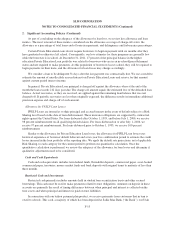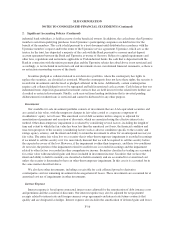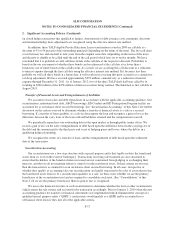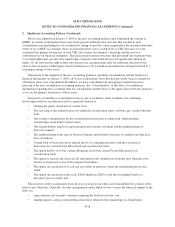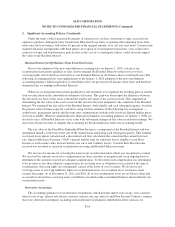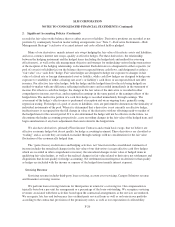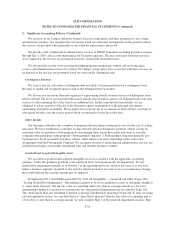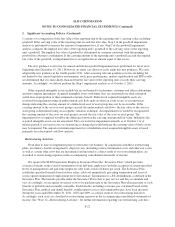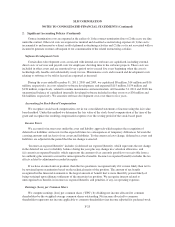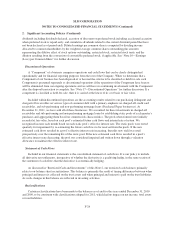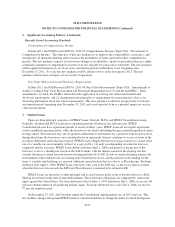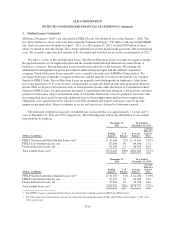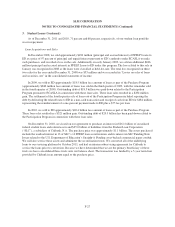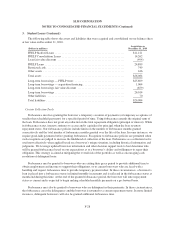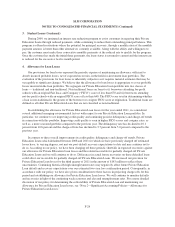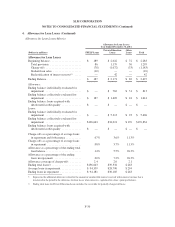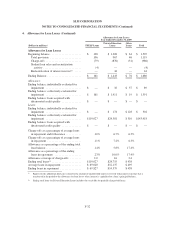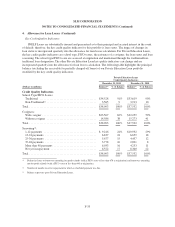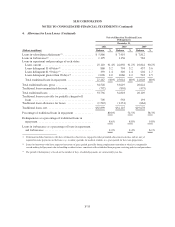Sallie Mae 2011 Annual Report Download - page 134
Download and view the complete annual report
Please find page 134 of the 2011 Sallie Mae annual report below. You can navigate through the pages in the report by either clicking on the pages listed below, or by using the keyword search tool below to find specific information within the annual report.SLM CORPORATION
NOTES TO CONSOLIDATED FINANCIAL STATEMENTS (Continued)
2. Significant Accounting Policies (Continued)
Recently Issued Accounting Standards
Presentation of Comprehensive Income
In June 2011, the FASB issued ASU No. 2011-05, Comprehensive Income (Topic 220), “Presentation of
Comprehensive Income.” The objective of this new guidance is to improve the comparability, consistency, and
transparency of financial reporting and to increase the prominence of items reported in other comprehensive
income. The new guidance requires all non-owner changes in stockholders’ equity be presented either in a single
continuous statement of comprehensive income or in two separate but consecutive statements. The new guidance
will be applied retrospectively for fiscal years, and interim periods within those years, beginning after
December 15, 2011. As such, this new guidance will be effective for us in the first quarter 2012. The new
guidance will not have an impact on our results of operations.
Fair Value Measurement and Disclosure Requirements
In May 2011, the FASB issued ASU No. 2011-04, Fair Value Measurement (Topic 820), “Amendments to
Achieve Common Fair Value Measurement and Disclosure Requirements in U.S. GAAP and IFRSs.” These
amendments (1) clarify the FASB’s intent about the application of existing fair value measurement and
disclosure requirements; and (2) change particular principles or requirements for measuring fair value or for
disclosing information about fair value measurements. This new guidance is effective prospectively for interim
and annual periods beginning after December 15, 2011 and is not expected to have a material impact on our fair
value measurements.
3. Student Loans
There are three principal categories of FFELP Loans: Stafford, PLUS, and FFELP Consolidation Loans.
Generally, Stafford and PLUS Loans have repayment periods of between five and ten years. FFELP
Consolidation Loans have repayment periods of twelve to thirty years. FFELP Loans do not require repayment,
or have modified repayment plans, while the borrower is in-school and during the grace period immediately upon
leaving school. The borrower may also be granted a deferment or forbearance for a period of time based on need,
during which time the borrower is not considered to be in repayment. Interest continues to accrue on loans in the
in-school, deferment and forbearance period. FFELP Loans obligate the borrower to pay interest at a stated fixed
rate or a variable rate reset annually (subject to a cap) on July 1 of each year depending on when the loan was
originated and the loan type. FFELP Loans disbursed before April 1, 2006 earn interest at the greater of the
borrower’s rate or a floating rate based on the SAP formula, with the interest earned on the floating rate that
exceeds the interest earned from the borrower being paid directly by ED. In low or certain declining interest rate
environments when student loans are earning at the fixed borrower rate, and the interest on the funding for the
loans is variable and declining, we can earn additional spread income that we refer to as Floor Income. For loans
disbursed after April 1, 2006, FFELP Loans effectively only earn at the SAP rate, as the excess interest earned
when the borrower rate exceeds the SAP rate (Floor Income) is required to be rebated to ED.
FFELP Loans are insured as to their principal and accrued interest in the event of default subject to a Risk
Sharing level based on the date of loan disbursement. These insurance obligations are supported by contractual
rights against the United States. For loans disbursed after October 1, 1993 and before July 1, 2006, we receive 98
percent reimbursement on all qualifying default claims. For loans disbursed on or after July 1, 2006, we receive
97 percent reimbursement.
On December 23, 2011, the President signed the Consolidated Appropriations Act of 2012 into law. This
law includes changes that permit FFELP lenders or beneficial holders to change the index on which the Special
F-25


